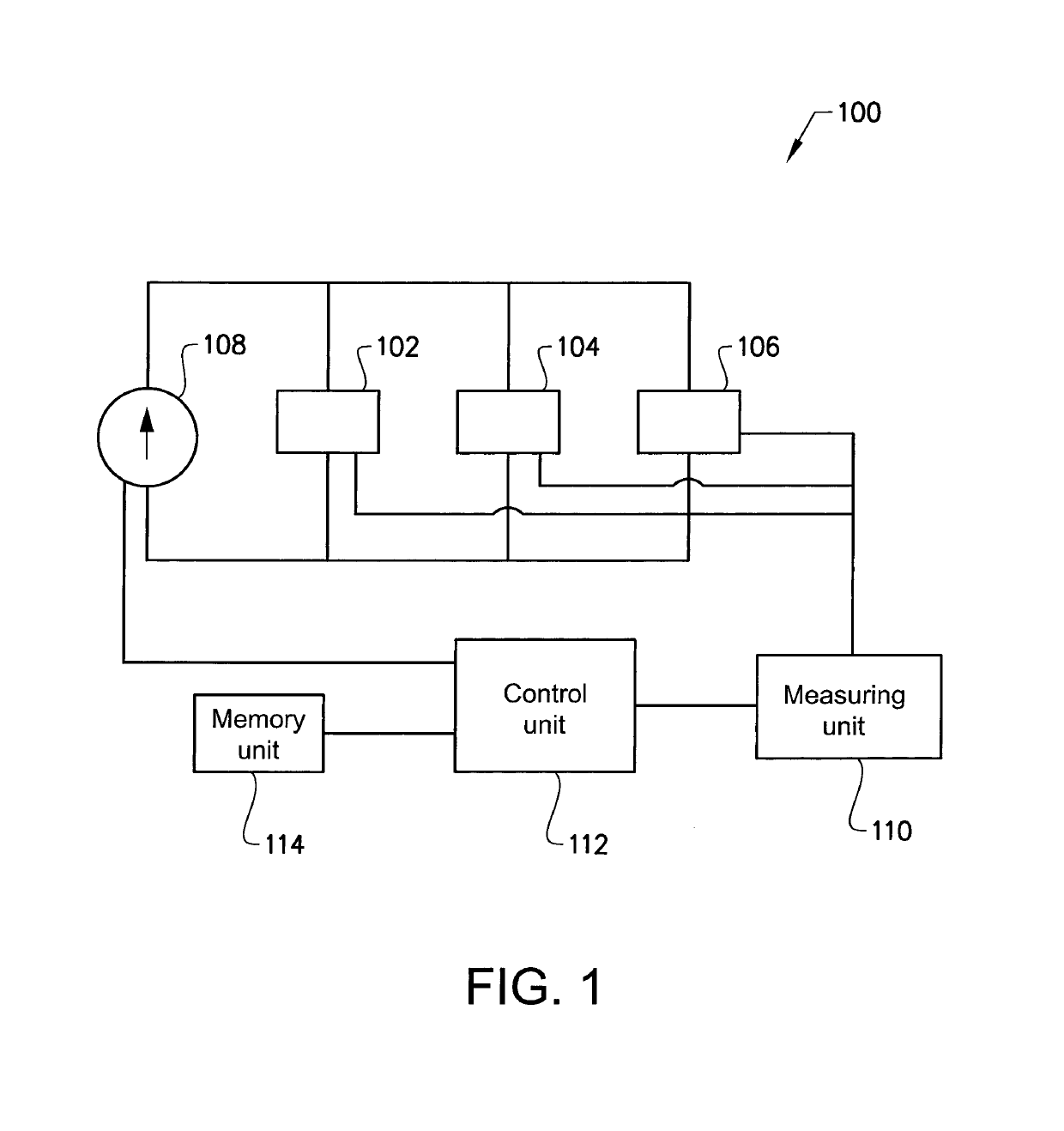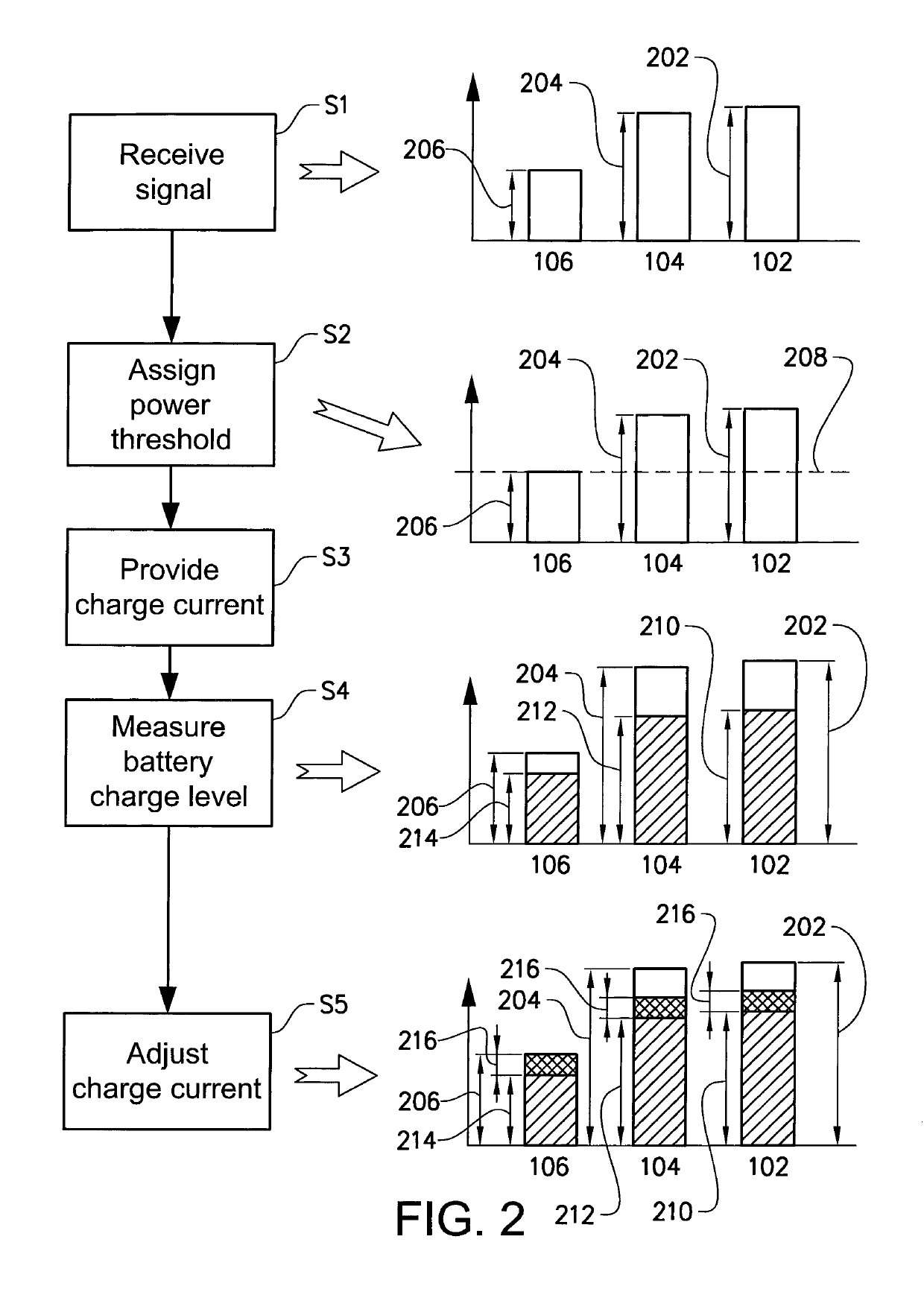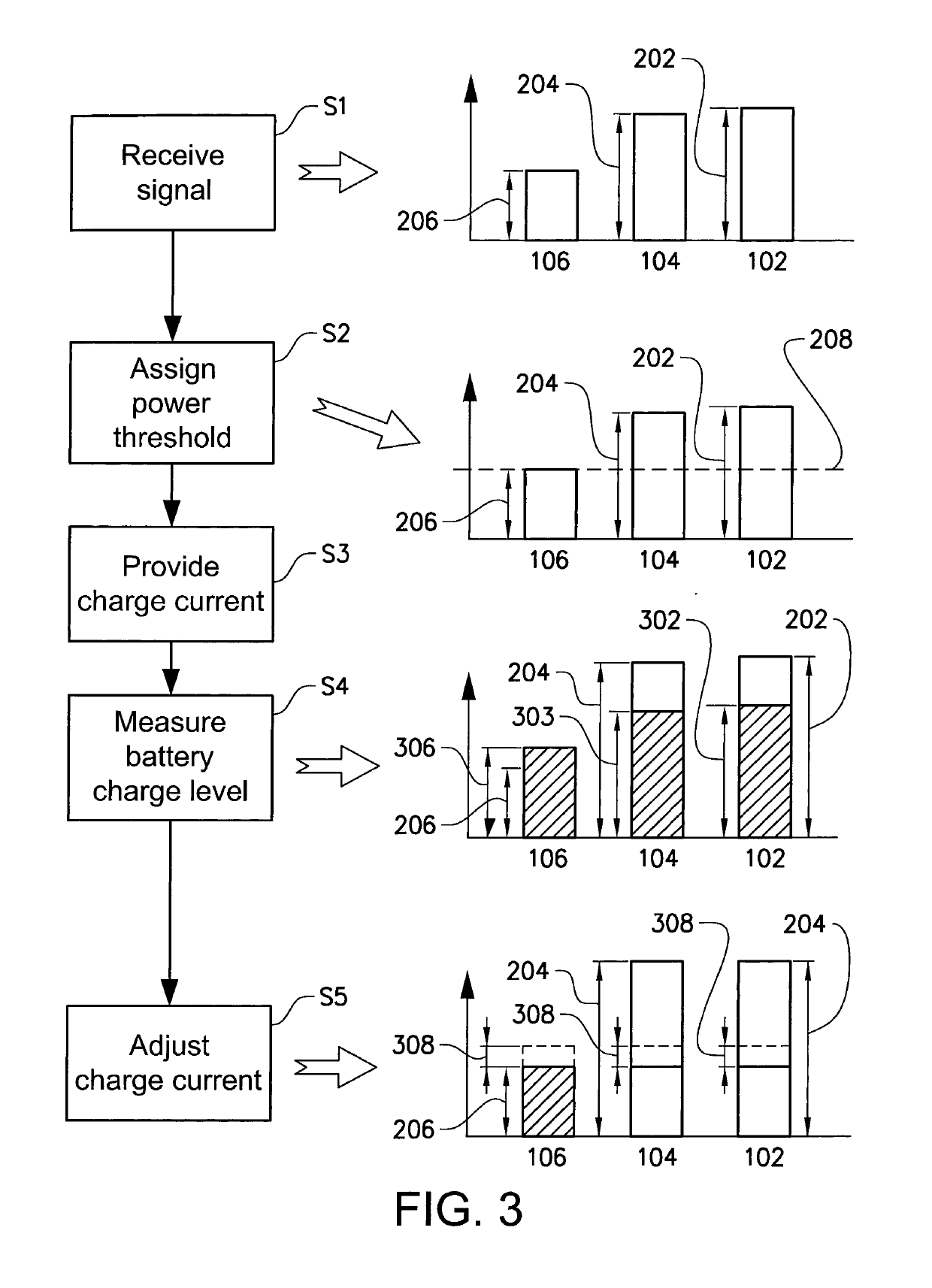Method for controlling an energy storage system
a technology of energy storage system and energy storage capacity, applied in the direction of battery/fuel cell control arrangement, indicating/monitoring circuit, transportation and packaging, etc., can solve the problem of reducing the charge capability and discharge capability of the oldest battery module, the risk of providing a charge current, and the temperature of the warmer battery module. achieve the lowest maximum power capability, reduce the risk of providing a charge current, and cost efficient
- Summary
- Abstract
- Description
- Claims
- Application Information
AI Technical Summary
Benefits of technology
Problems solved by technology
Method used
Image
Examples
Embodiment Construction
[0034]The present invention will now be described more fully hereinafter with reference to the accompanying drawings, in which exemplary embodiments of the invention are shown. The invention may, however, be embodied in many different forms and should not be construed as limited to the embodiments set forth herein; rather, these embodiments are provided for thoroughness and completeness. Like reference characters refer to like elements throughout the description.
[0035]Turning to FIG. 1, which illustrates an example embodiment of an energy storage system 100 according to the present invention. The energy storage system 100 depicted in FIG. 1 comprises a first 102, a second 104, and a third 106 battery module. The battery modules 102, 104, 106 are coupled in parallel to each other and are further connected to a generator 108 configured to generate electric current for charging the parallel coupled battery modules 102, 104, 106. The wording “battery module” should in the following and ...
PUM
 Login to View More
Login to View More Abstract
Description
Claims
Application Information
 Login to View More
Login to View More - R&D
- Intellectual Property
- Life Sciences
- Materials
- Tech Scout
- Unparalleled Data Quality
- Higher Quality Content
- 60% Fewer Hallucinations
Browse by: Latest US Patents, China's latest patents, Technical Efficacy Thesaurus, Application Domain, Technology Topic, Popular Technical Reports.
© 2025 PatSnap. All rights reserved.Legal|Privacy policy|Modern Slavery Act Transparency Statement|Sitemap|About US| Contact US: help@patsnap.com



